From the gilded age.
Measured rationally – say by the percentage of wealth or income to US Gross Domestic Product – the fortunes enjoyed by the capitalists of the Gilded Age (1870 – 1900) were perhaps the greatest since the Pharaohs. Marxist dogma notwithstanding – and one should withstand utter nonsense – the industrialists of this age raised a vast army of immigrants to middle class status, their children going on to enjoy education and prosperity. Their capitalist employers, meanwhile, tried to outdo one another by building magnificent mansions in Newport, Rhode Island, easily accessed by sea from their plantations or coal mines in West Virginia and points south.
These nouveau riches came to be mocked by the landed gentry of western Europe until it came to marital vows, of course, at which time their complaints about vulgarity turned to enjoyment of yet another jeroboam of Chateau Mouton Rothschild at the wedding feast. Then as now money attracted money and the failing fortunes in the old world saw to it that they latched on to the much greater ones in the New World.
We toured two of these mansions yesterday on a picture perfect day with our friend from Lexington, Santo W. and had an absolute blast. While the bargain deal is the ticket to see all five of these which are open to the public, we kept it down to two as any more would have resulted in total visual overload. When you gaze at the sheer sizes of these homes you will understand why. Add in large amounts of period art and decoration and overload comes quickly.
The Breakers:
Cornelius Vanderbilt II (1843 – 1899) made money the smart way. He chose his parents well and inherited it from his father (1784 – 1877), the legendary railroad and shipping magnate with the grade school education. The latter started his commercial life by running a precursor of the Staten Island Ferry where his work ethic and drive earned him the sobriquet ‘Commodore’, one which stuck for the remainder of his very long and productive life. Along with Carnegie he is probably the second wealthiest American in the nation’s history, after J D Rockefeller, using that GDP metric.
CV II built the 62,000 square foot Breakers, right on the ocean. It has 70 rooms and was completed in 1895 after a mere two years. Labor unions had not yet destroyed the work ethic. If the sheer size and gaudiness of the Breakers overwhelm, it’s still worth a visit for the guilty pleasure of wallowing in so much excess. Would you like to live here? Well, if 30 foot ceilings and cavernous, poorly lit bedrooms are your thing, have at it.
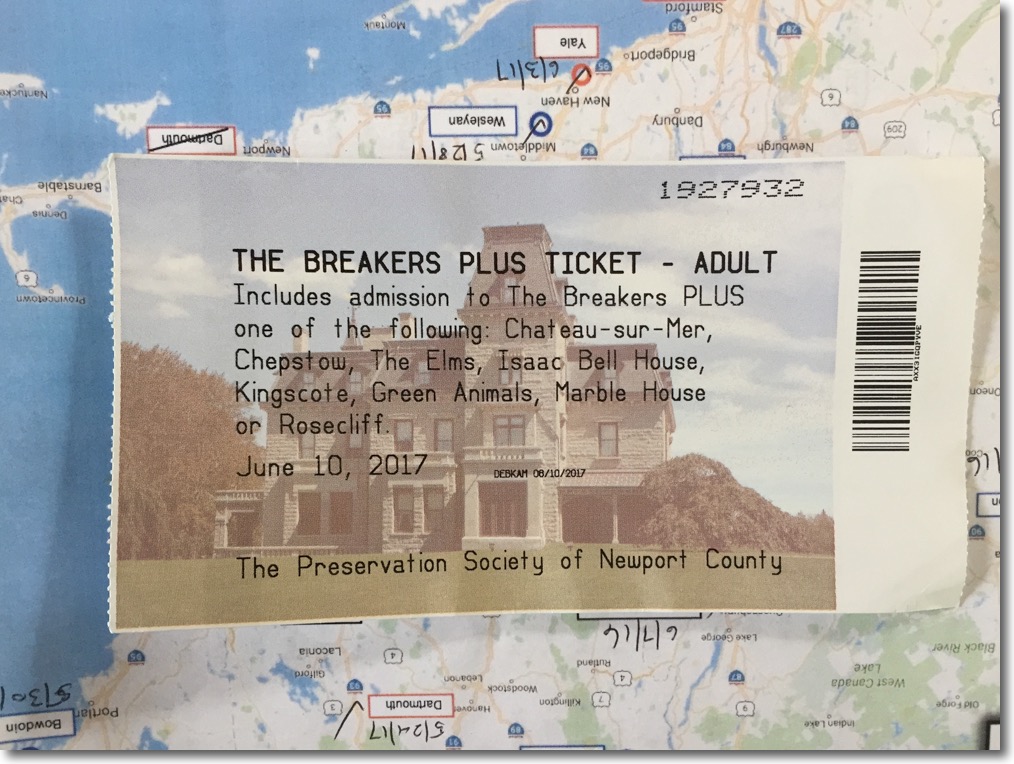
The entry ticket atop our strategic New England tour map.
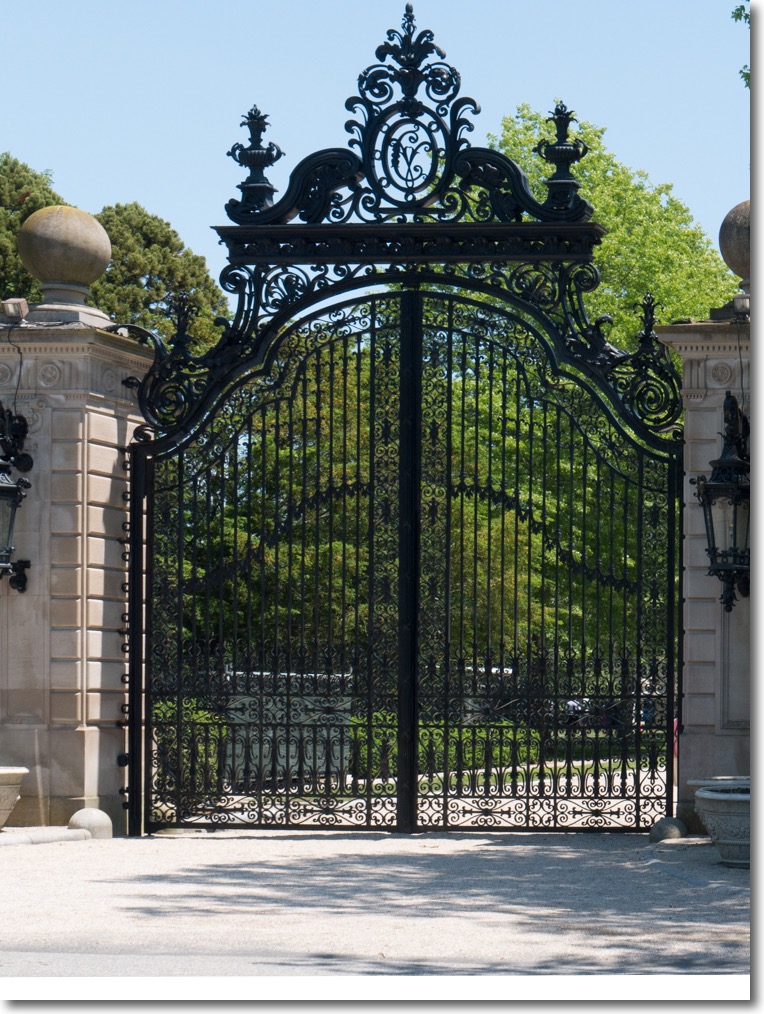
A full parking lot did nothing to detract from a fine visit, with a classy crowd largely devoid of tattoos.
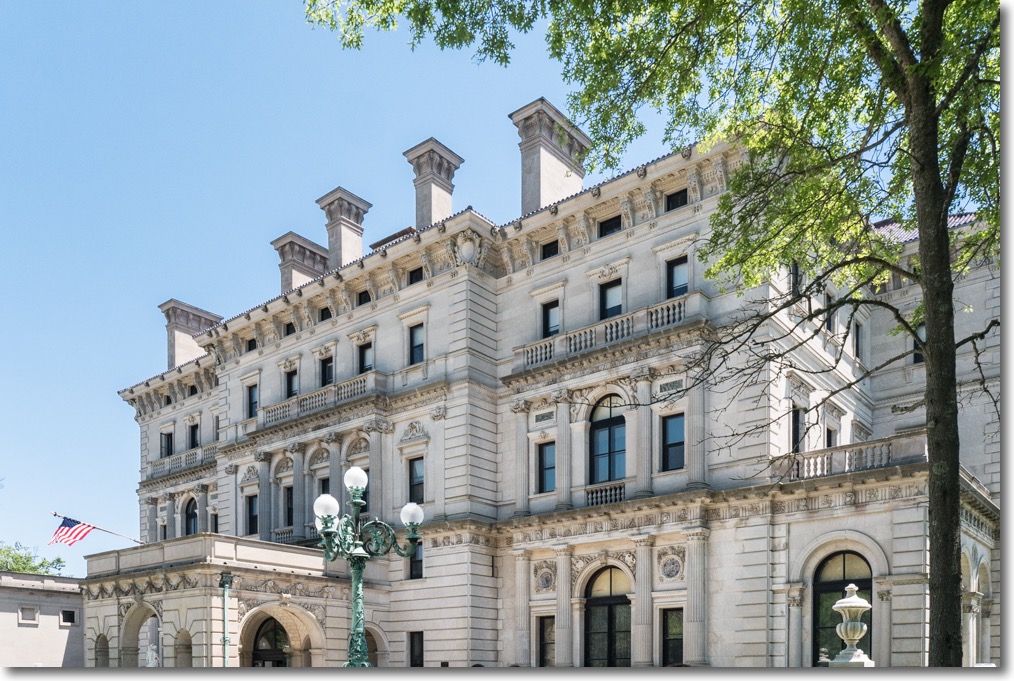
62,000 square feet plus a like amount of formal garden.

Home made clouds.
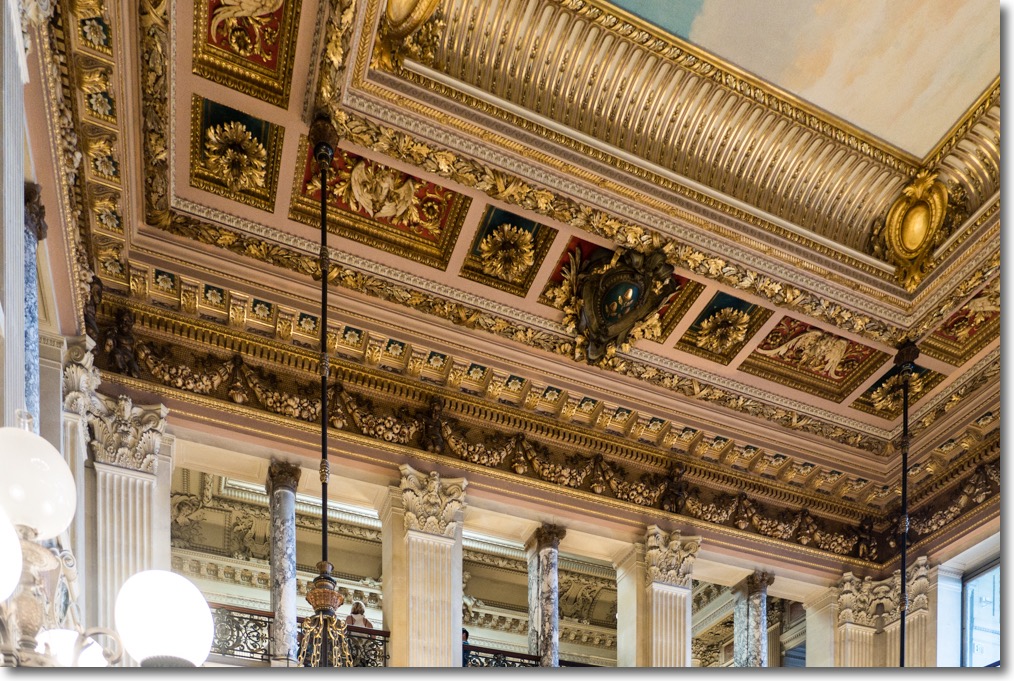
Opulence.
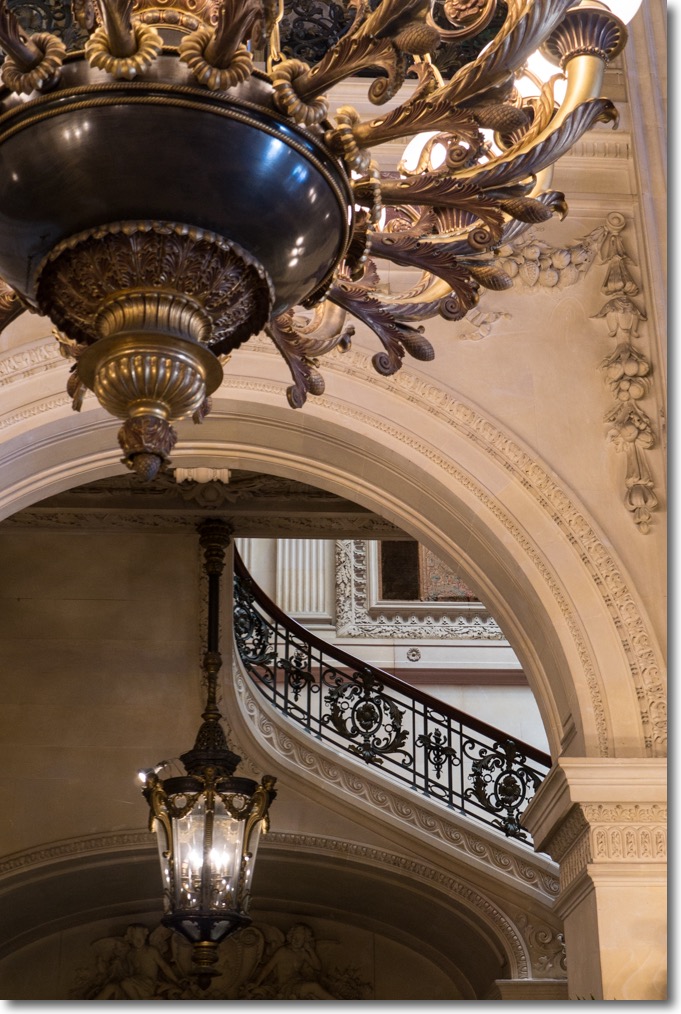
The cast iron balustrade is capped with a bronze hand rail. The quality is breathtaking.
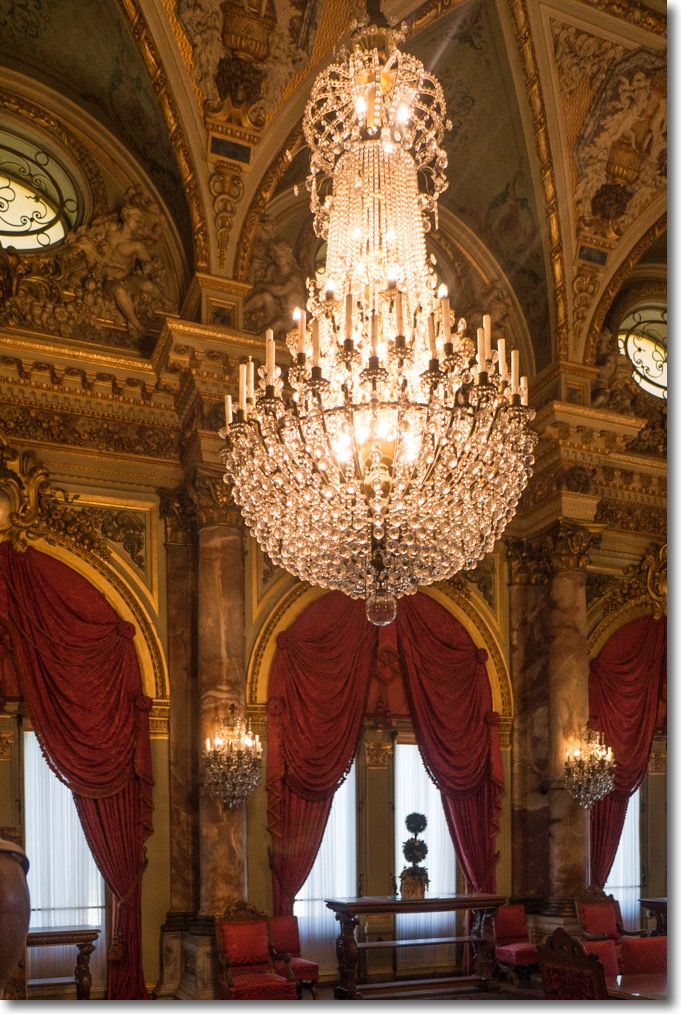
One of many dozens.
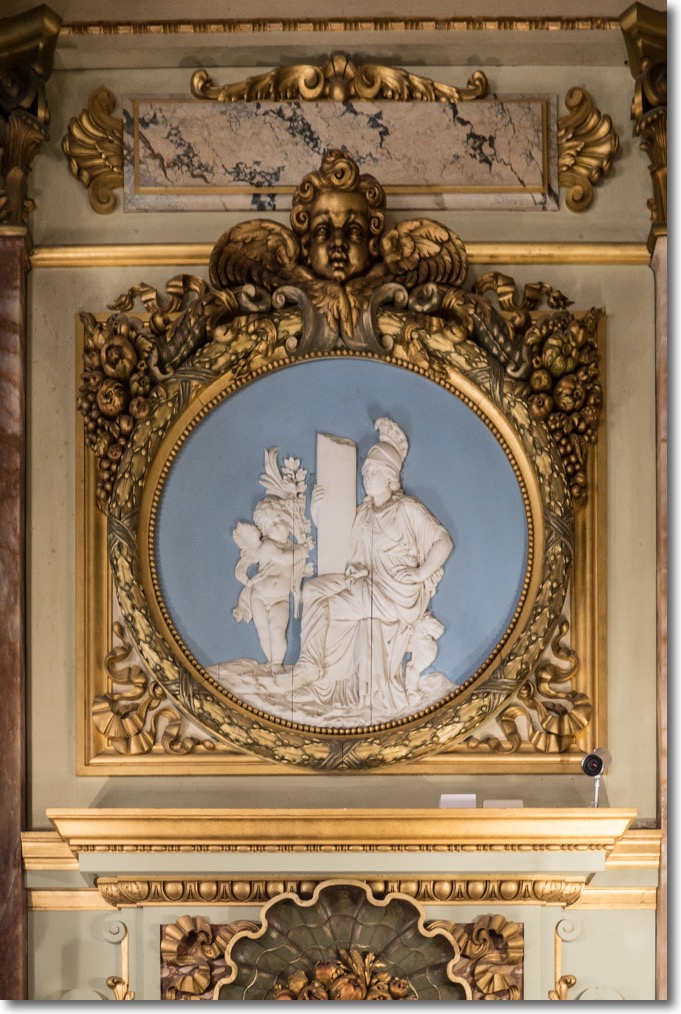
Mantle piece.
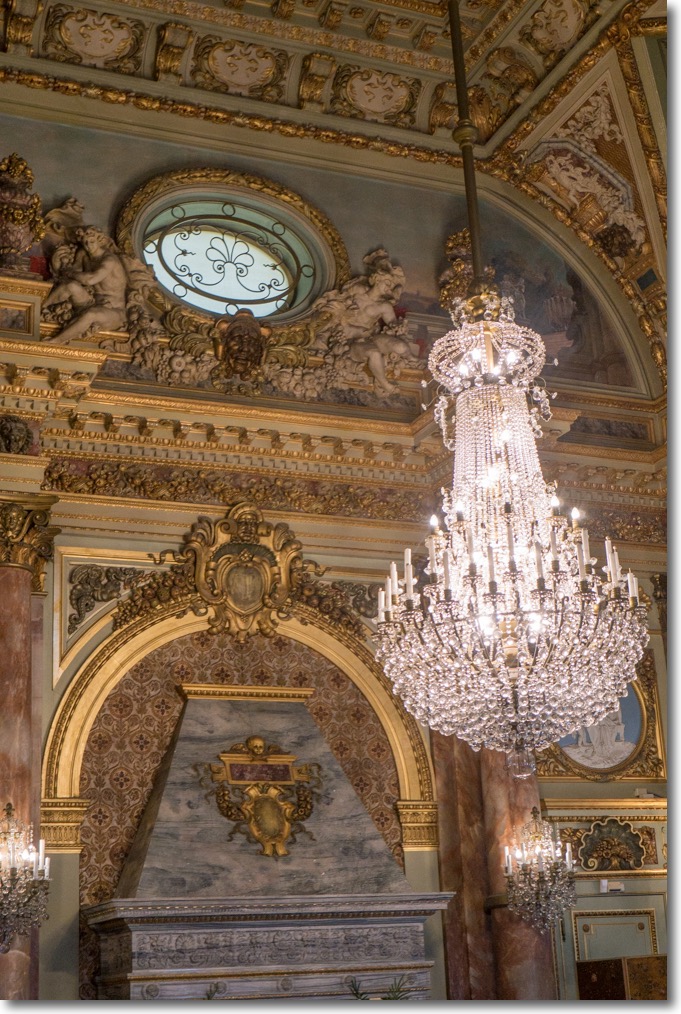
Another.
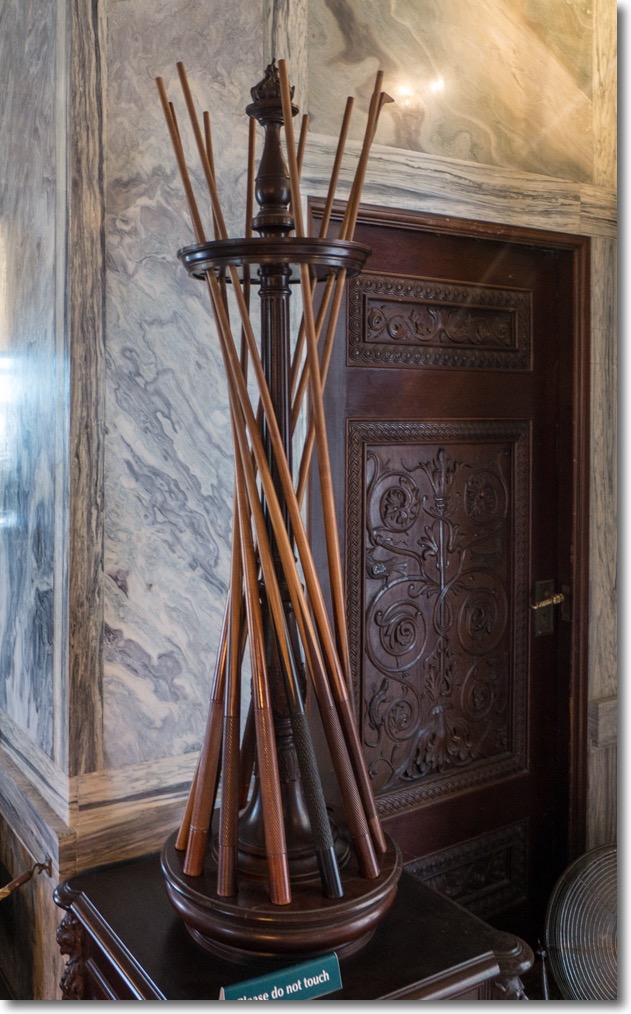
In the pool room.
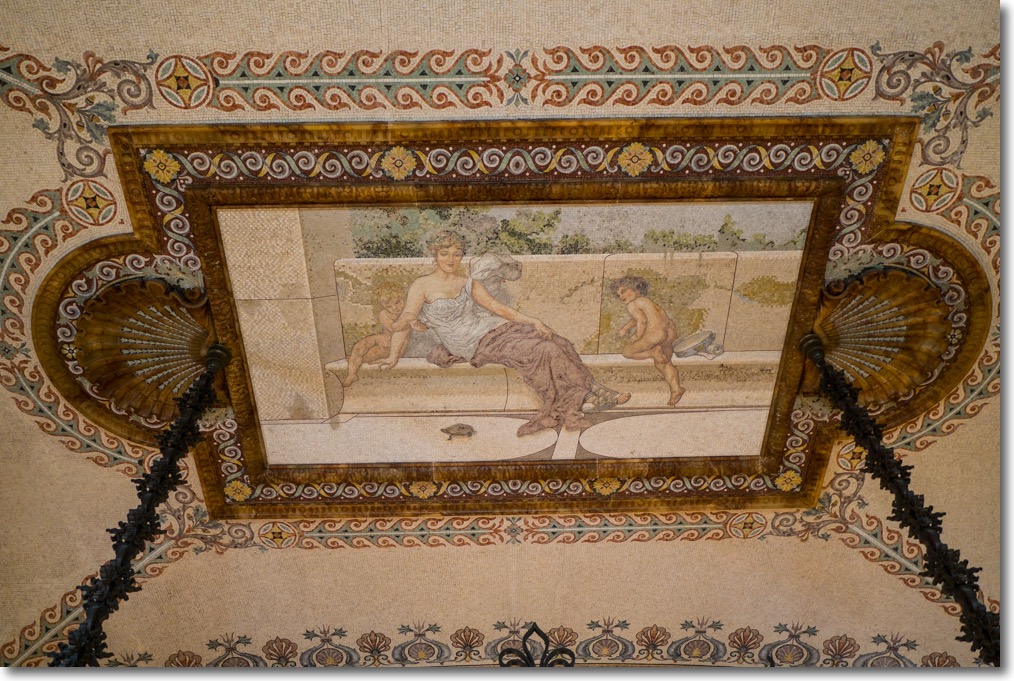 Tiles, not oils.
Tiles, not oils.
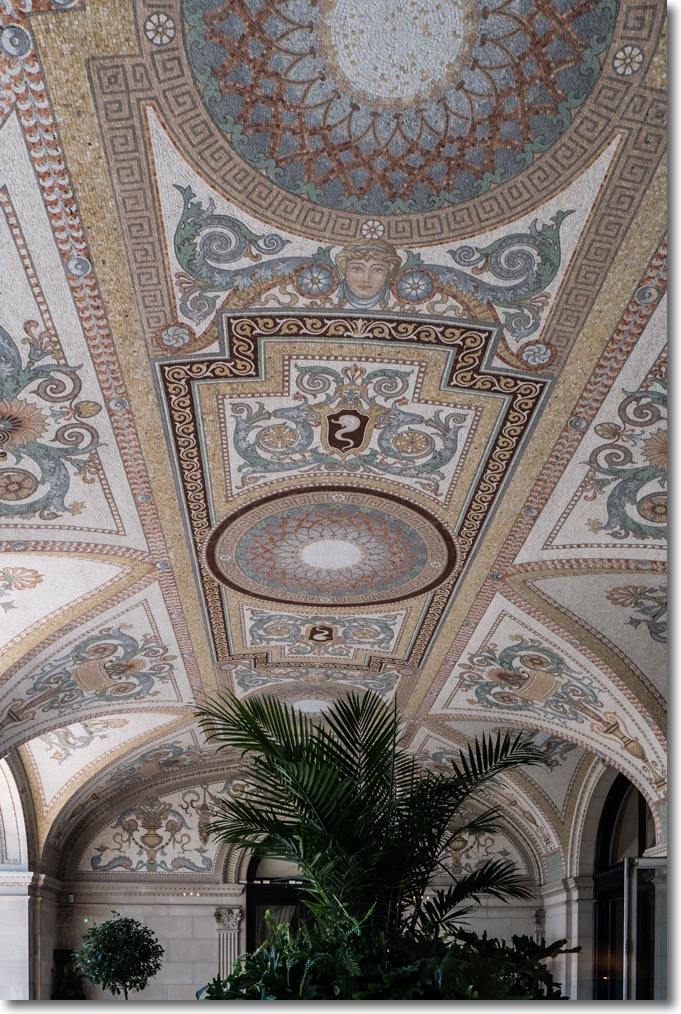
Immigrant artisans saw to it that the work was of the highest quality.
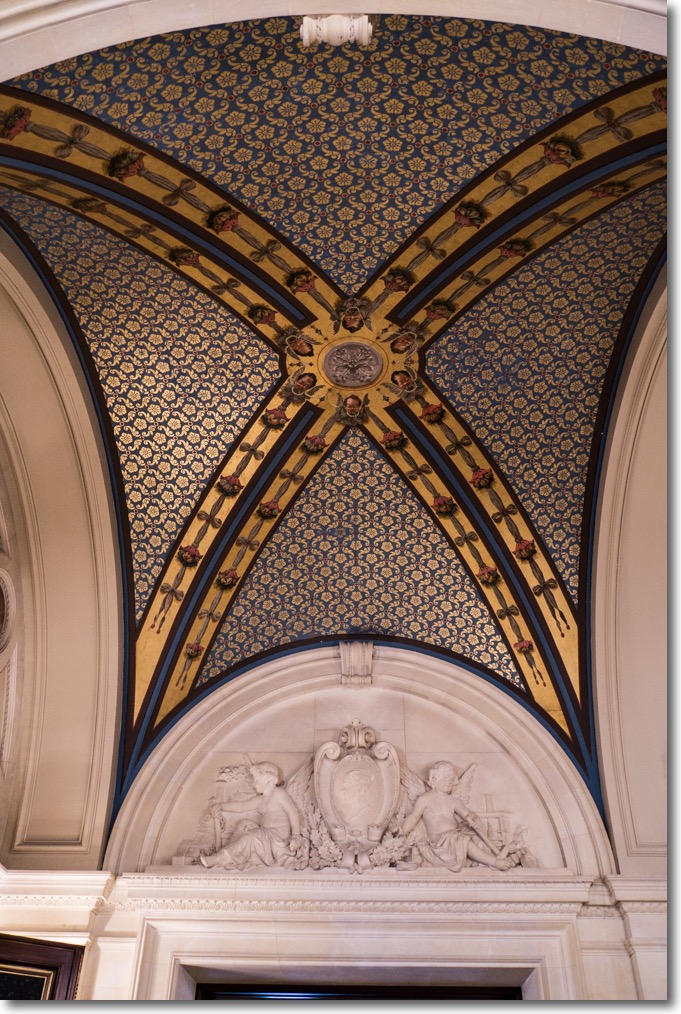
Vaulted ceiling with cherubs.
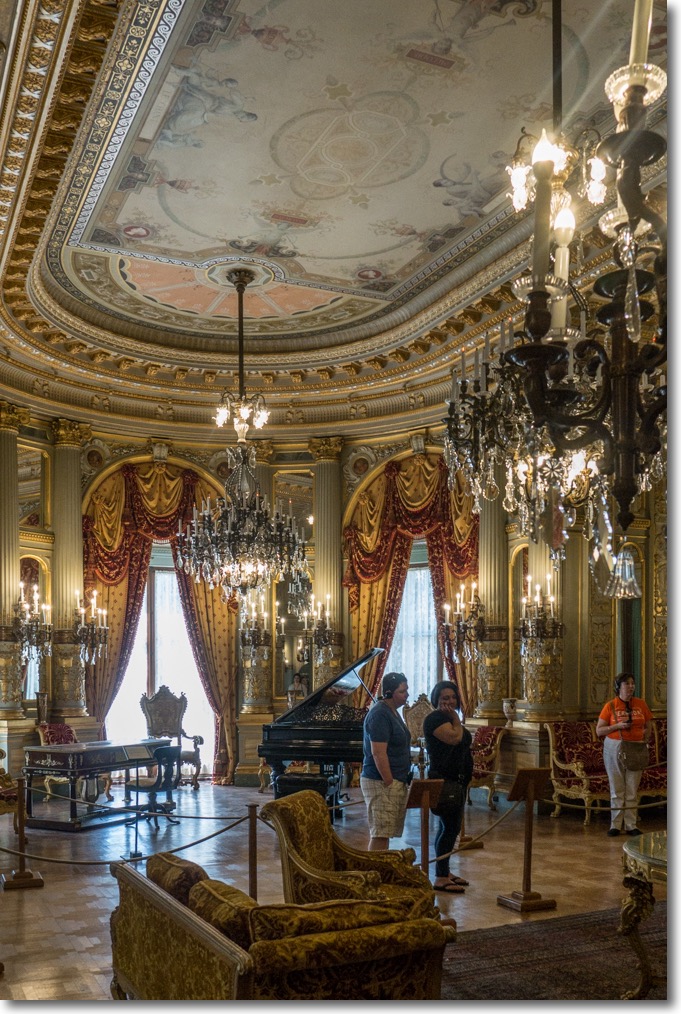
Visual overload.
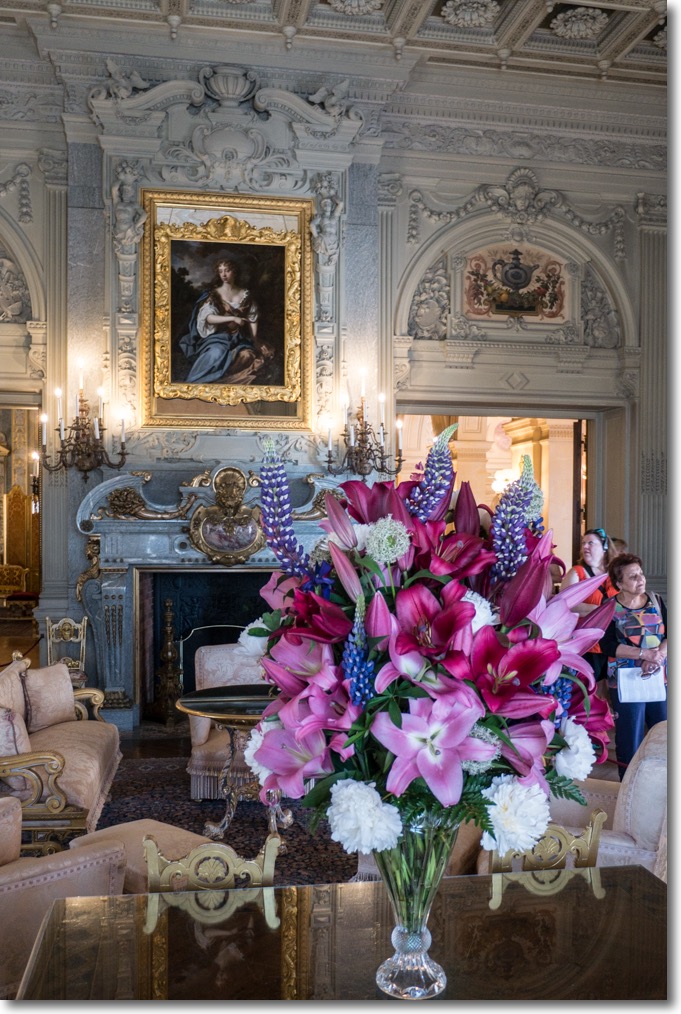
A sitting room with fresh cut flowers.
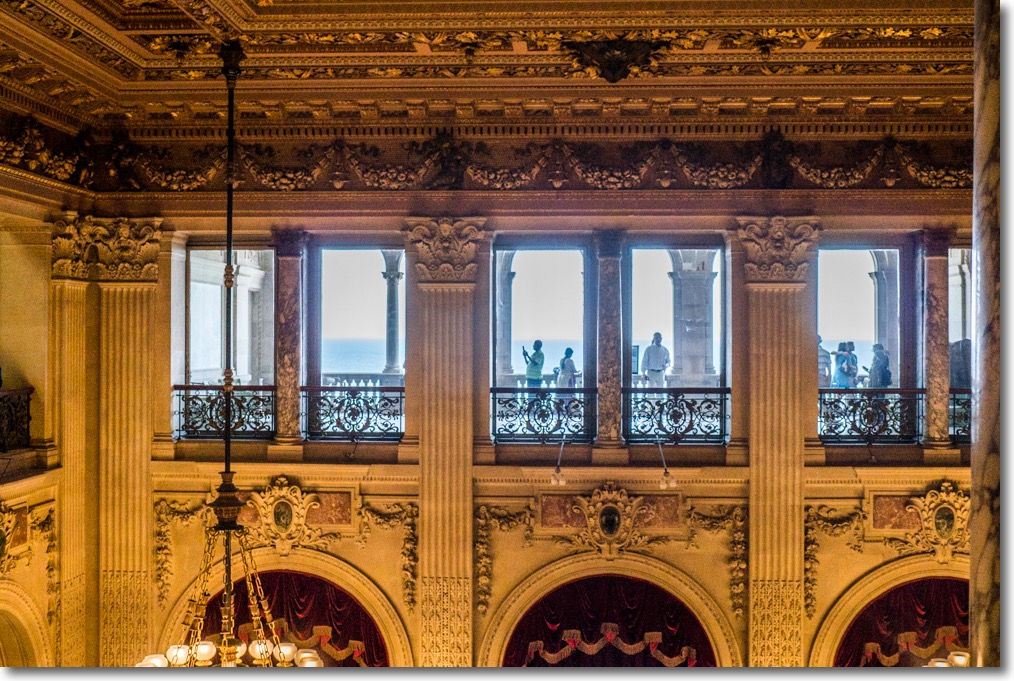
From the second floor balcony. The servants’ quarters are on the top floor.
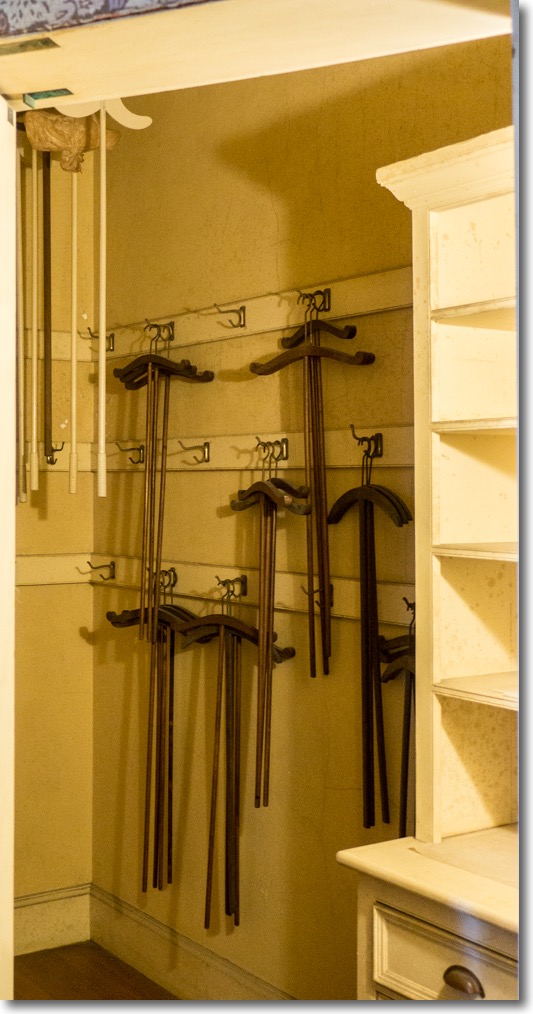
Coat hangers in the master closet.
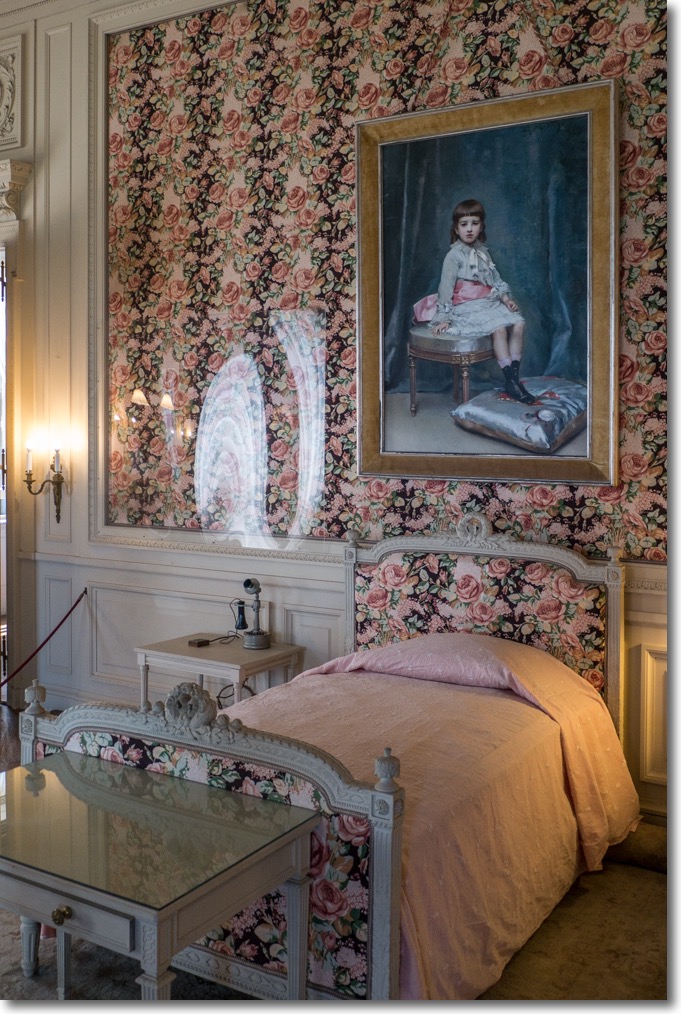
The wife’s bedroom. Separate bedrooms were the order of the day.
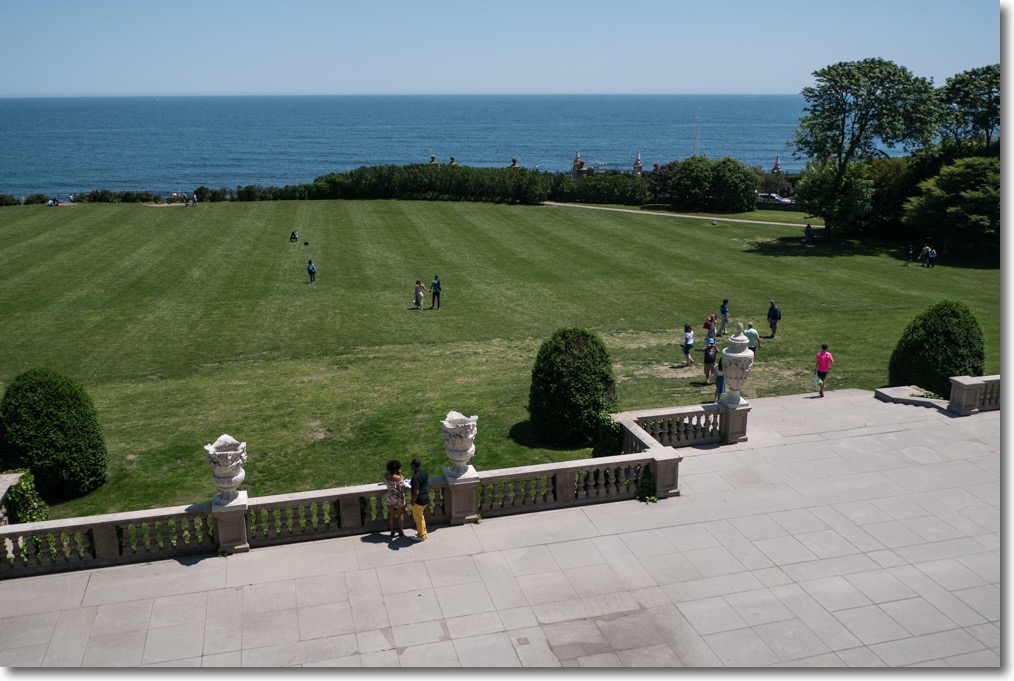
The landscaping disappoints with no formal floral garden, unlike the magnificence of Filoli.
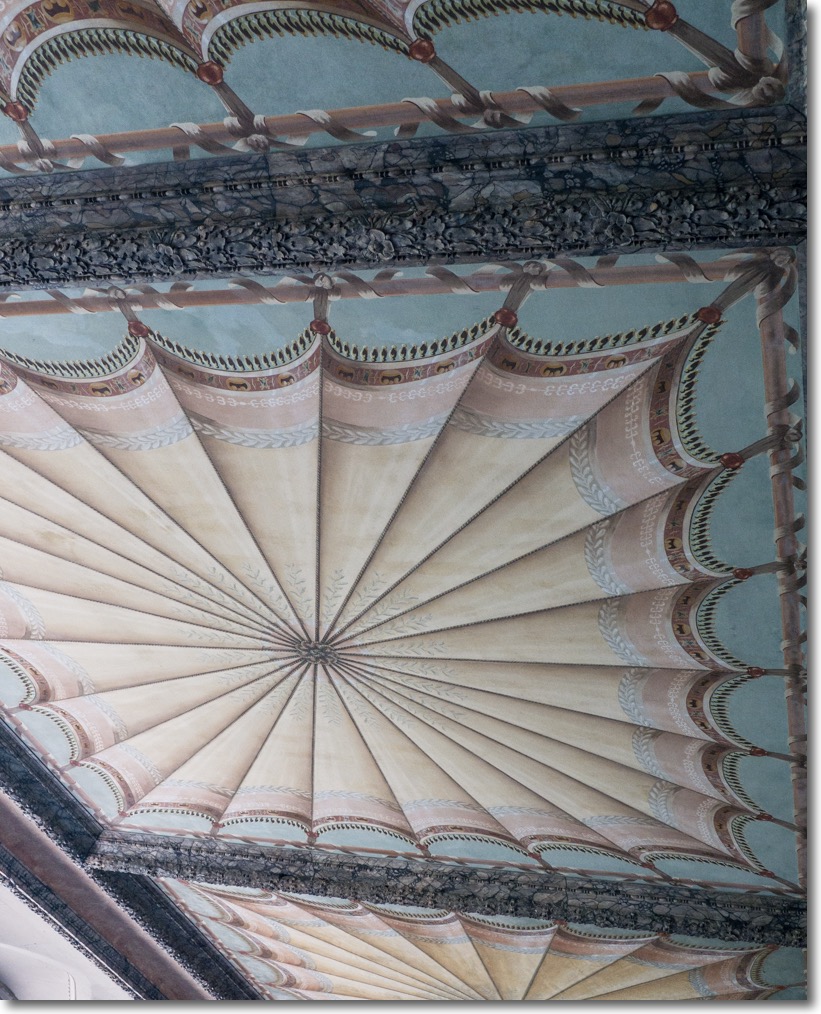
Painted ceiling.
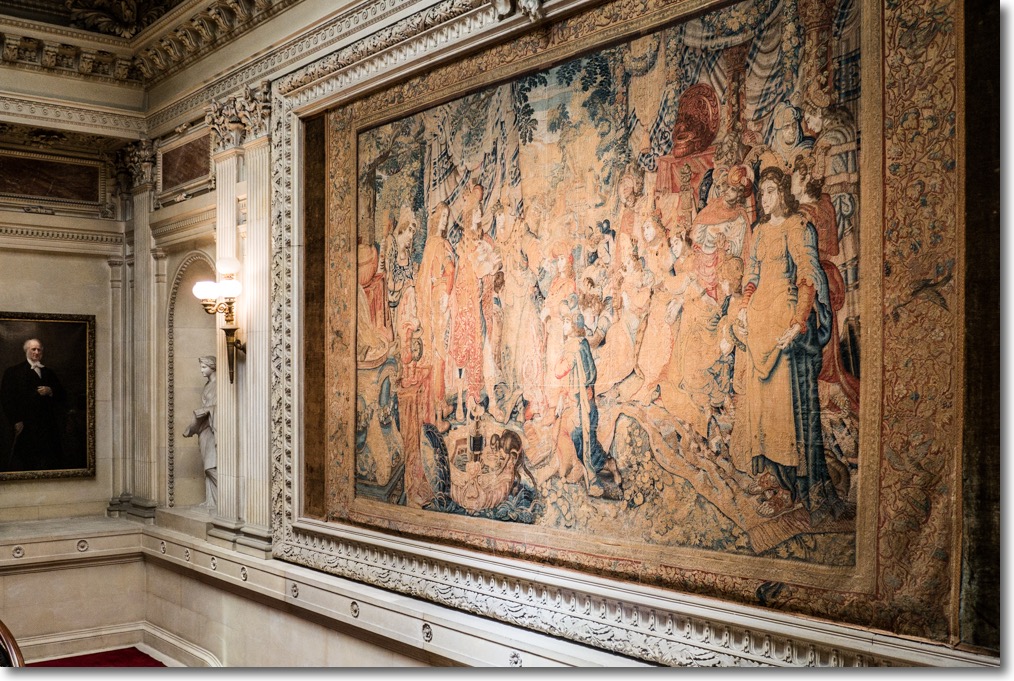
The tapestries, by Flemish Karel van Mander II date from 1619, and are on a gargantuan scale. Old man Vanderbilt at left.
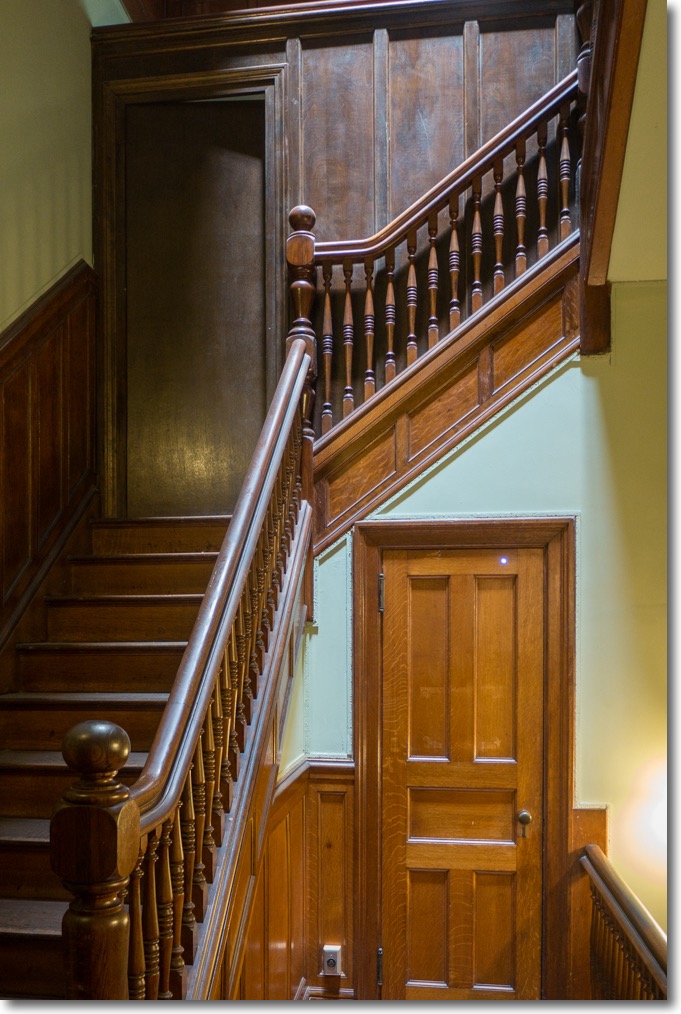
This beautiful staircase leads to the china storage area above the main kitchen.
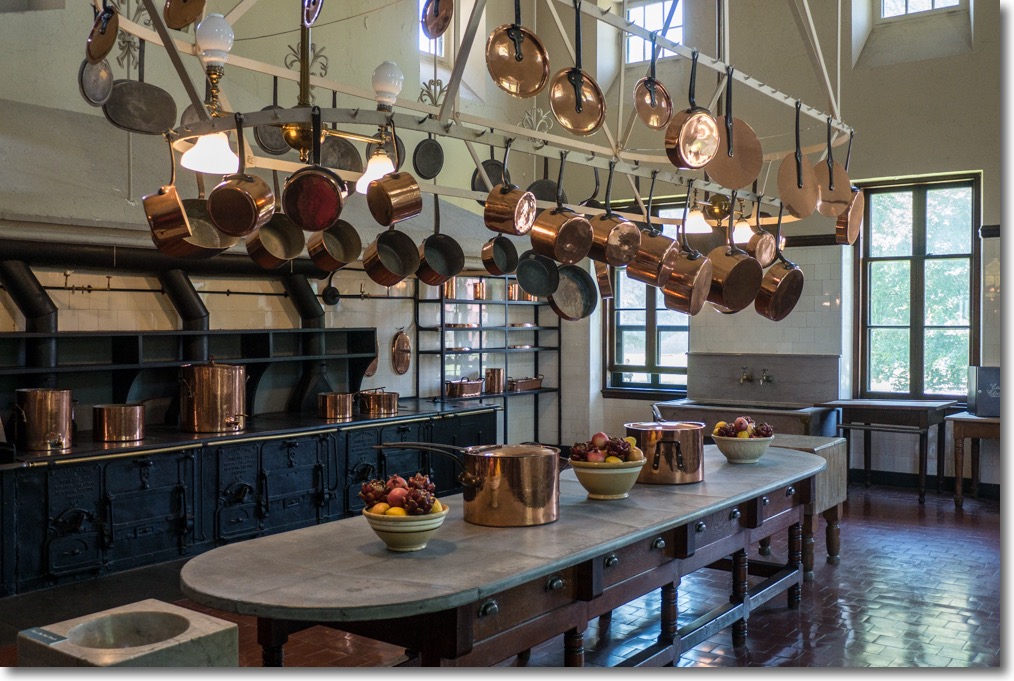
The main kitchen. Industrial scale parties called for a like place to prepare meals.
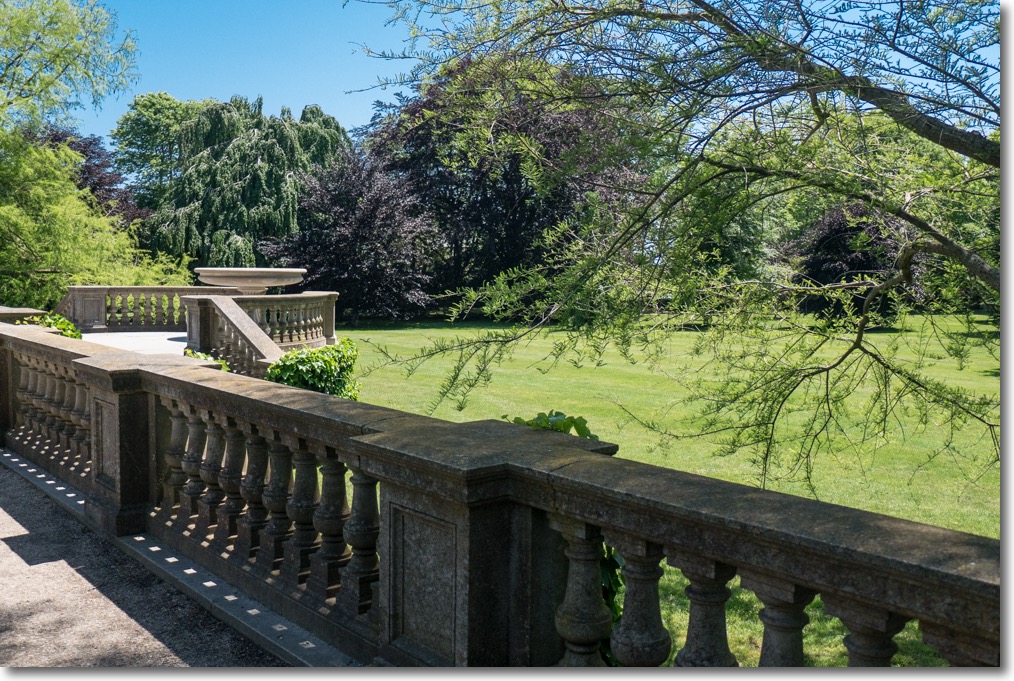
The unadorned grounds.
The Elms:
The coal baron Edward Julius Berwind (1848 – 1936) kept a low profile which is why you have probably never heard of him, but he put his vast wealth to good use in creating the Elms, completed in 1901, where he spent only the weekends from July 4th through August, such were the demands of coal mining. Berwind’s interest in technology saw to it that the Elms was one of the first Newport mansions to be electrically lit and like the Breakers the home is built on a steel frame for longevity.
Much smaller than the Breakers the sense of design and taste here is also much superior, and while there is no oceanfront setting, this carbon copy of a French chateau is far more welcoming.
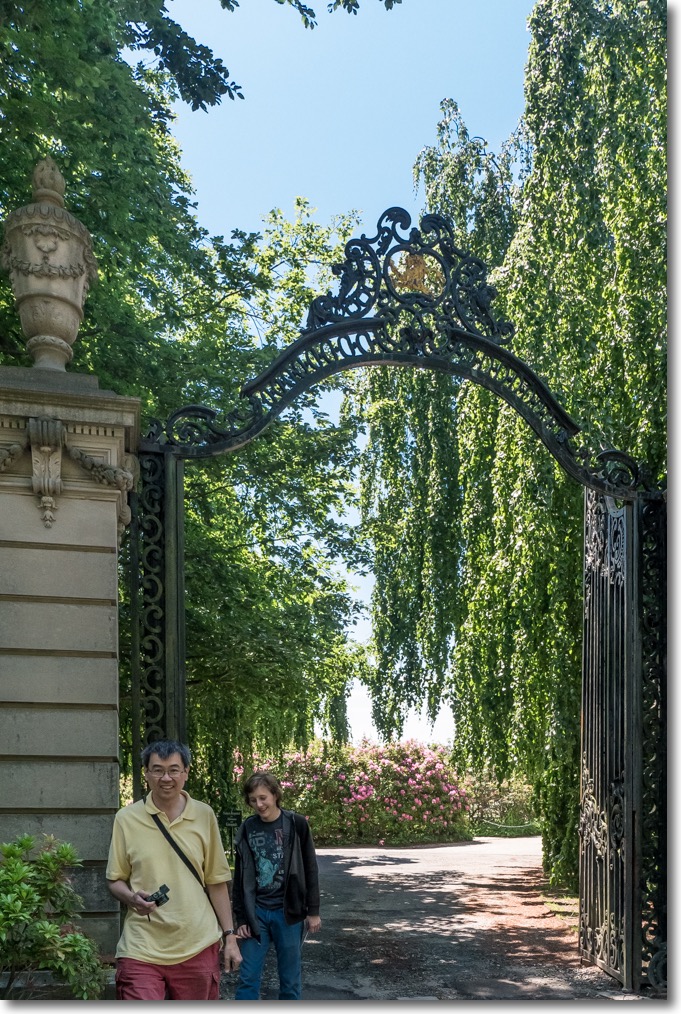
Santo and Winston at the main gate.
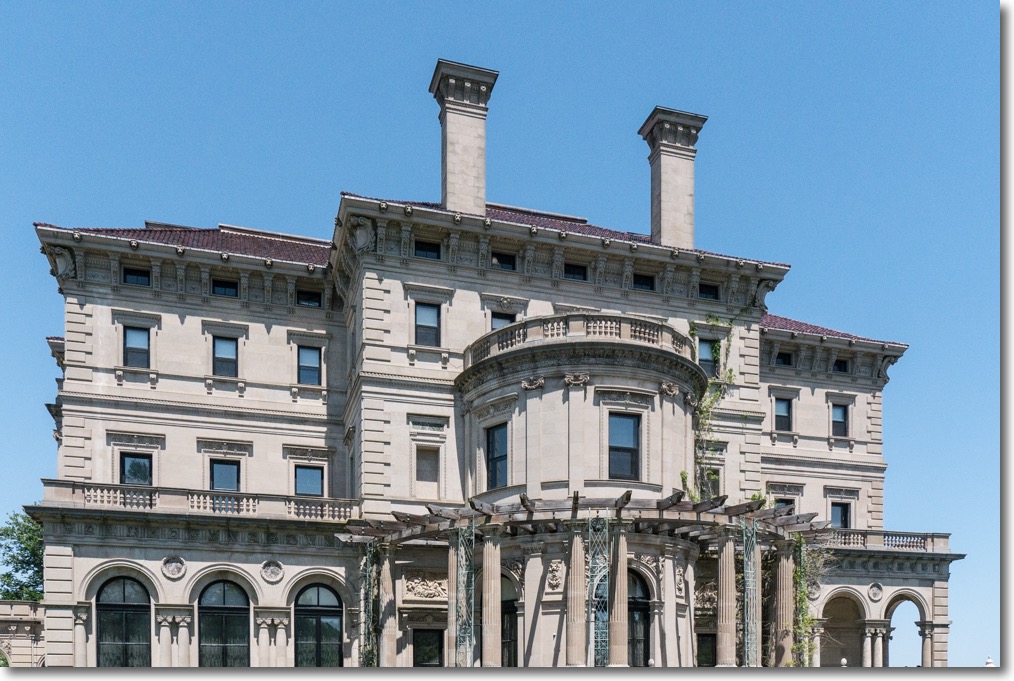
French chateau style, a copy of the Chateau d’Asnieres in Asnieres-sur-Seine, France
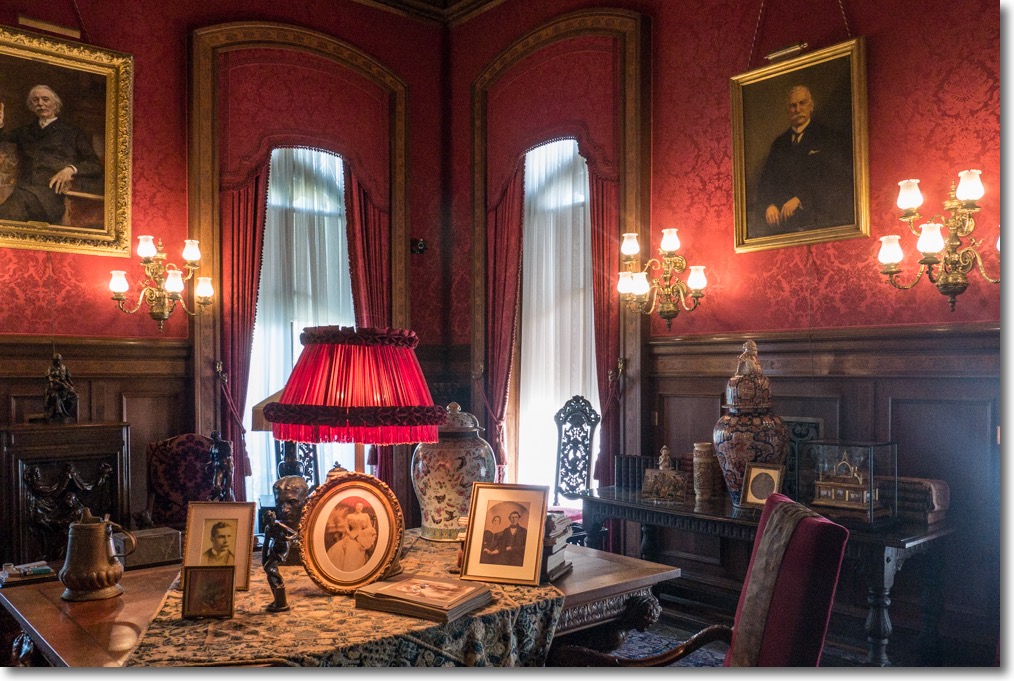
The damask wall covering is French.
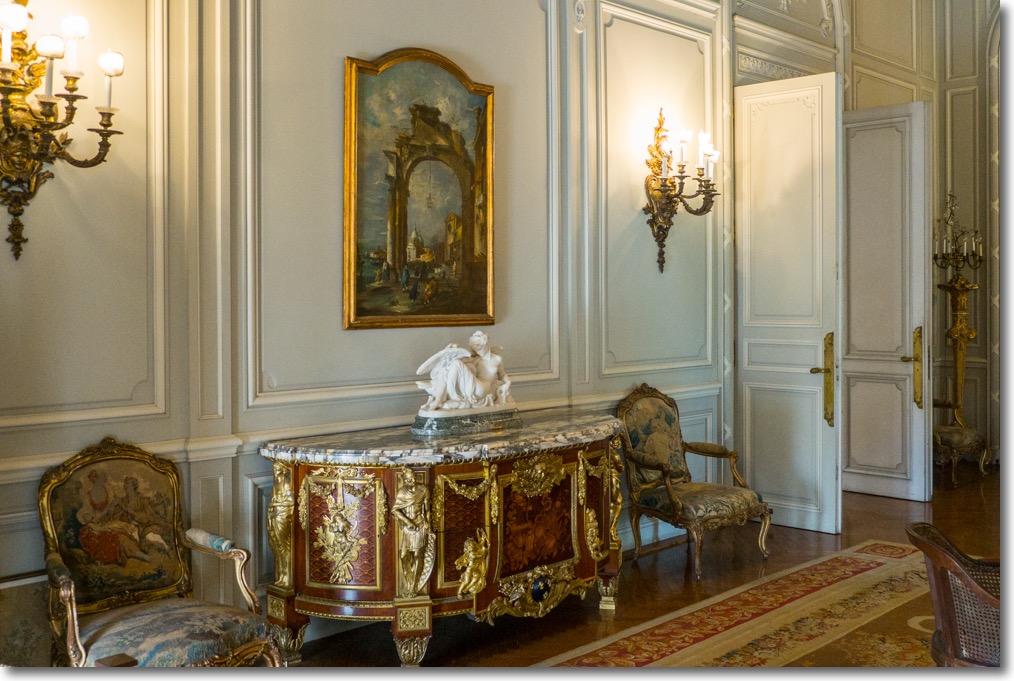
French furniture abounds.
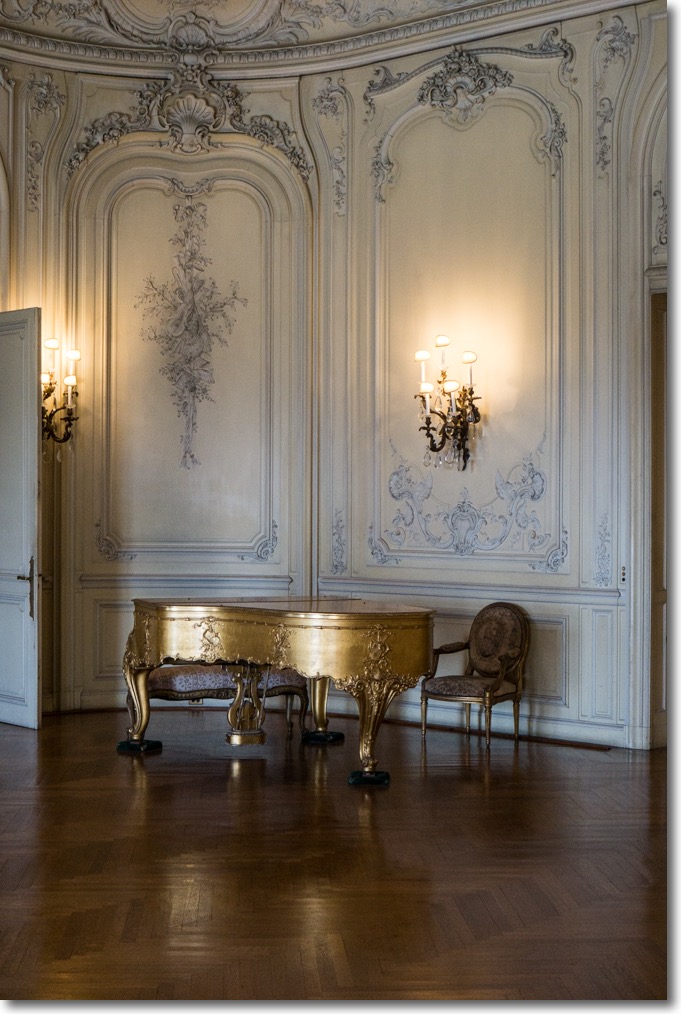
A rare lapse in taste this really should be moved to the Oval Office.
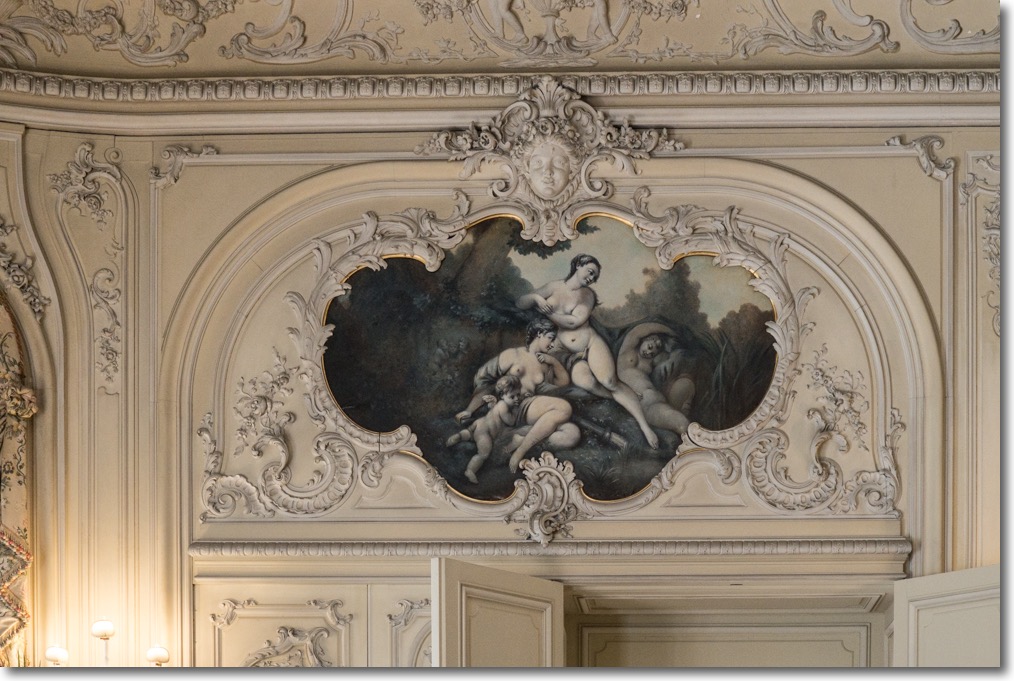
Painted ceiling.
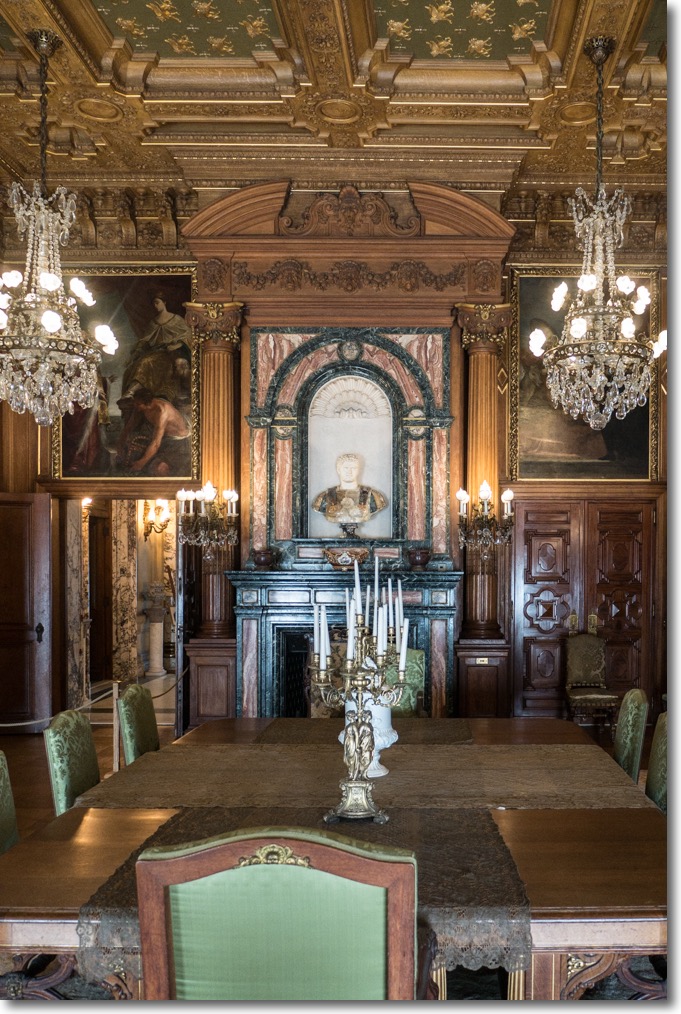
Woof!
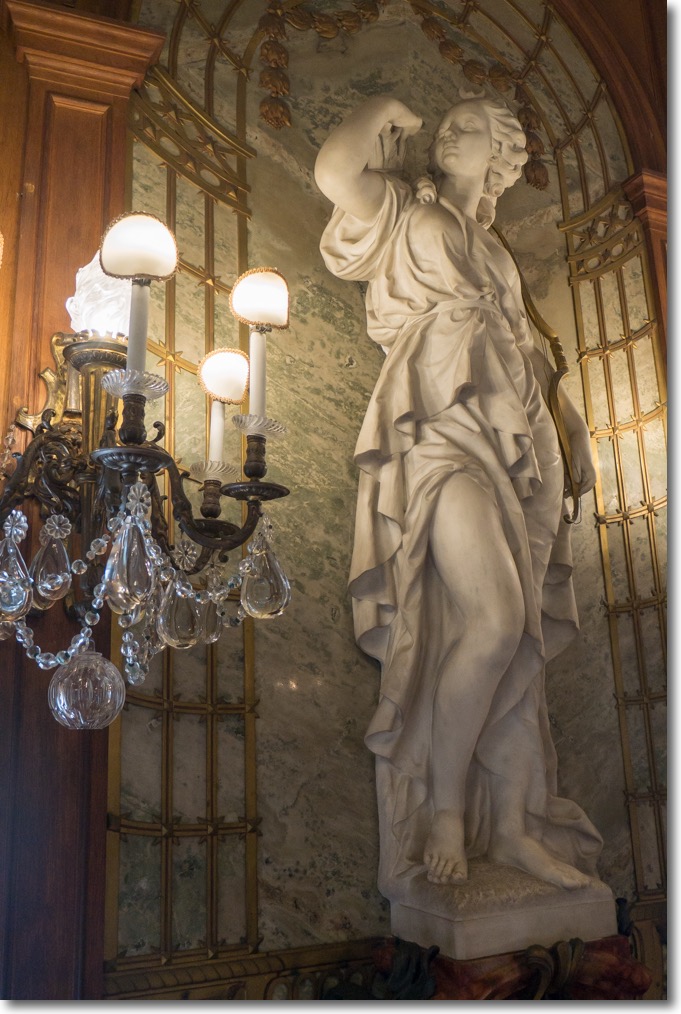
Statuary abounds.
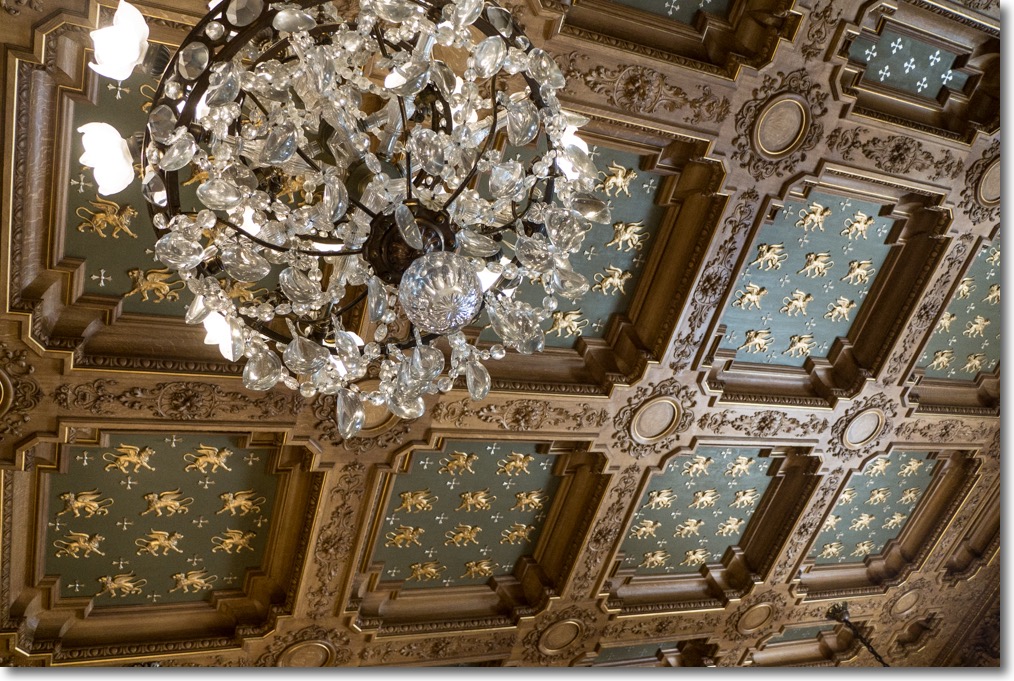
Santo informed us that the guided tour recording states the lions are the symbols of Venice. You know, the one in Italy, not in Los Angeles.
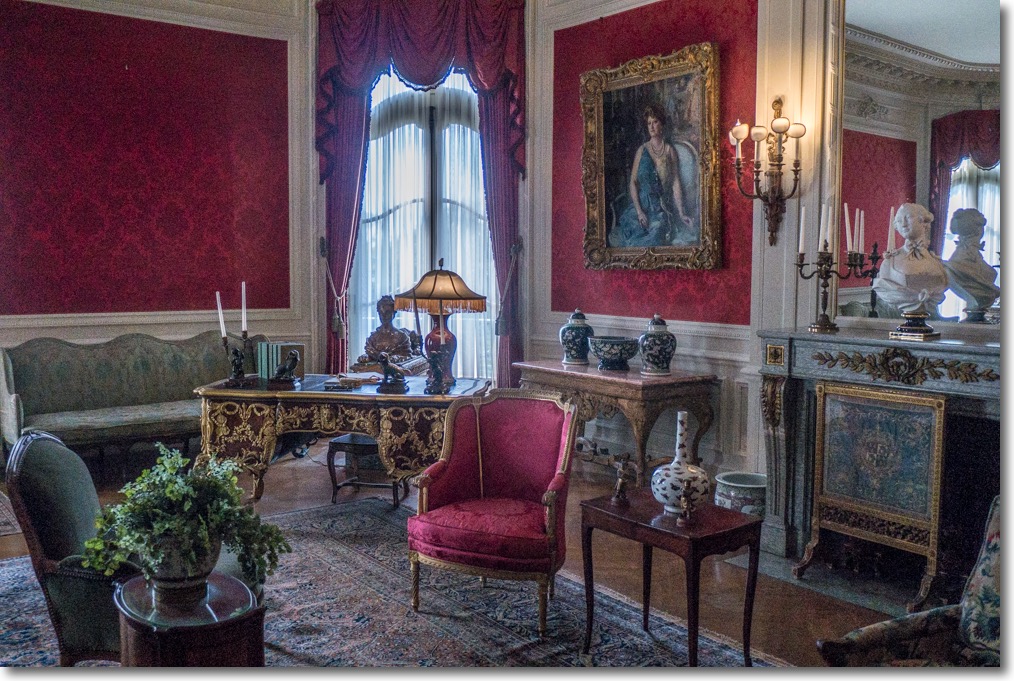
A drawing room.
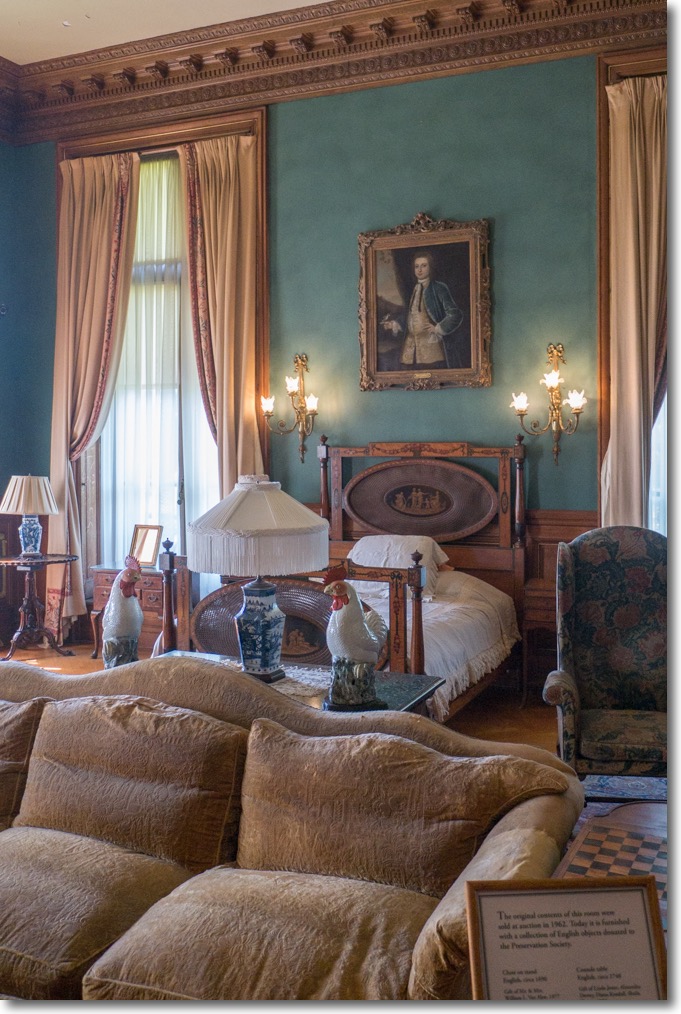
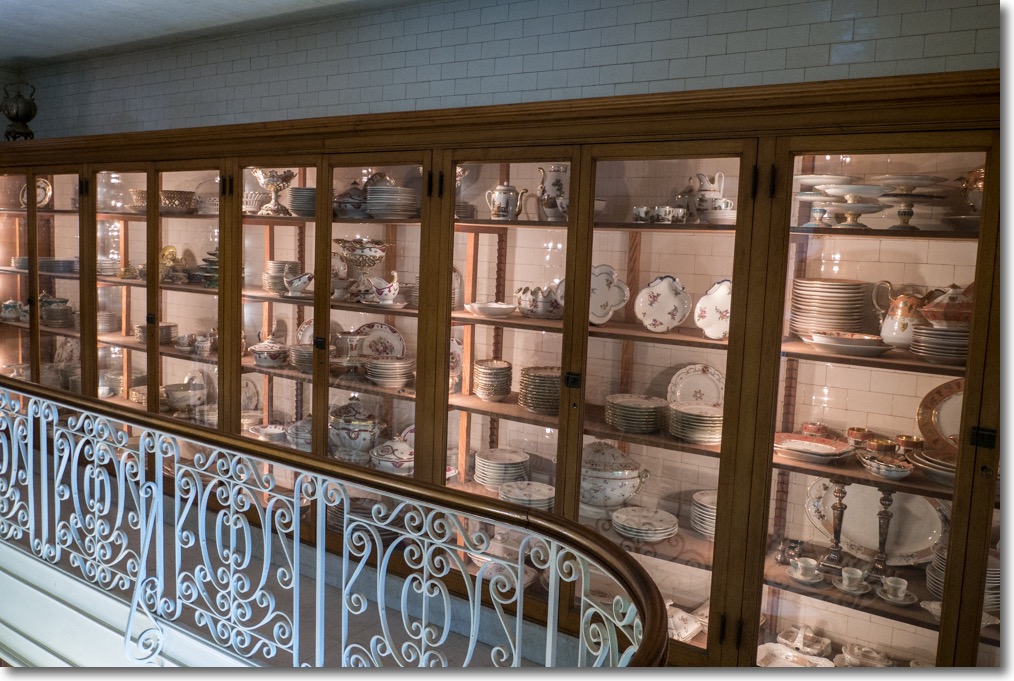
Many sets of china in storage above the kitchen.
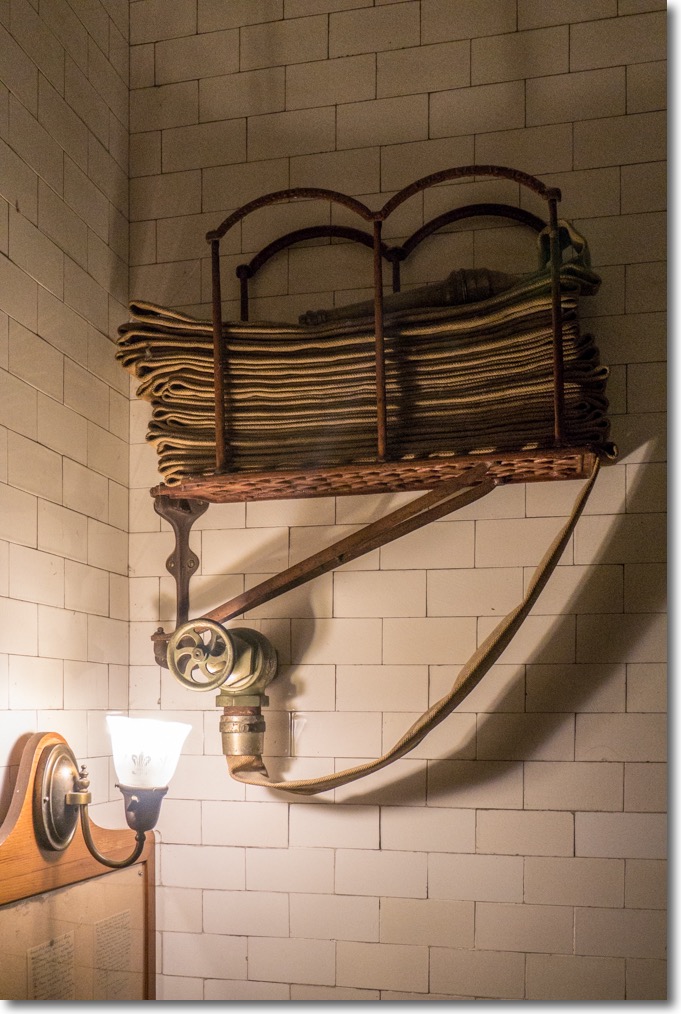
The technology focus is reflected in the fire hose system inside the home.
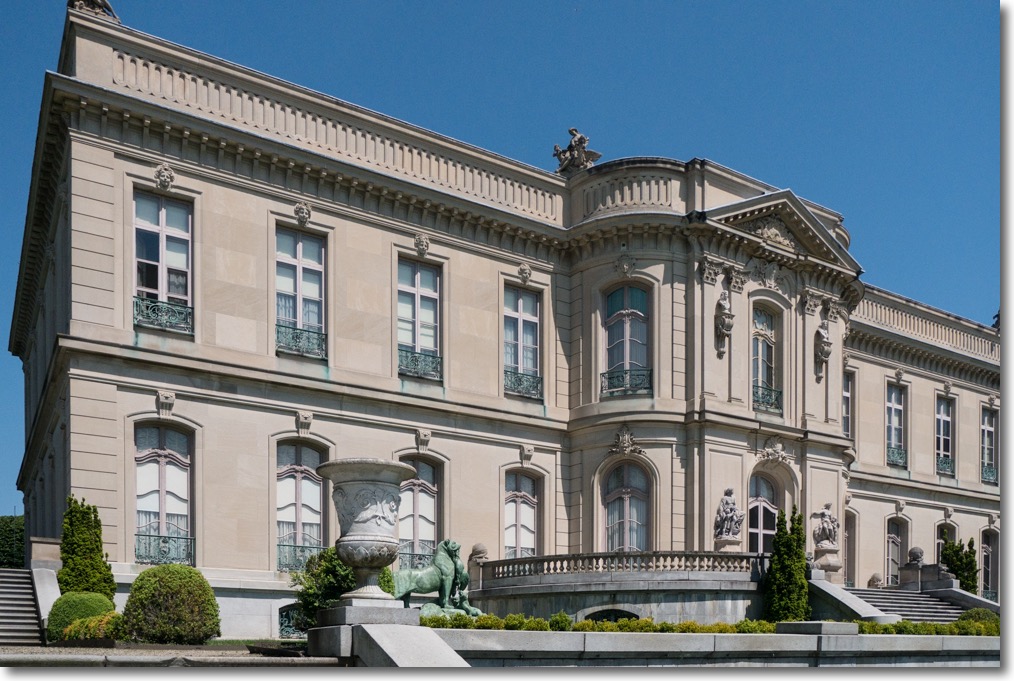
The rear of the home.
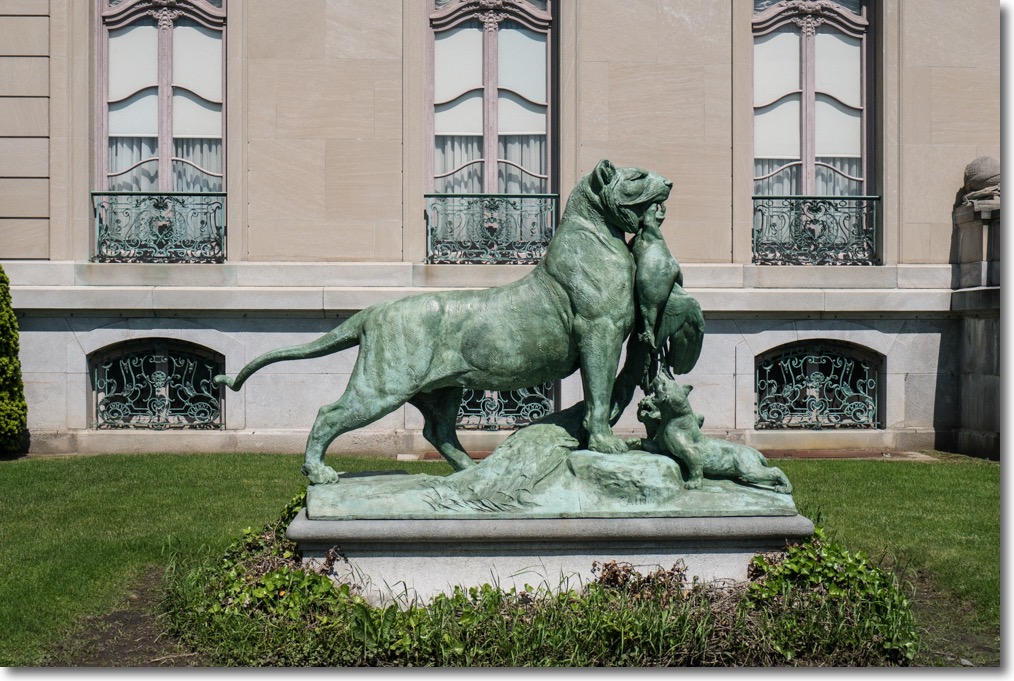
This lion appears to favor poultry ….
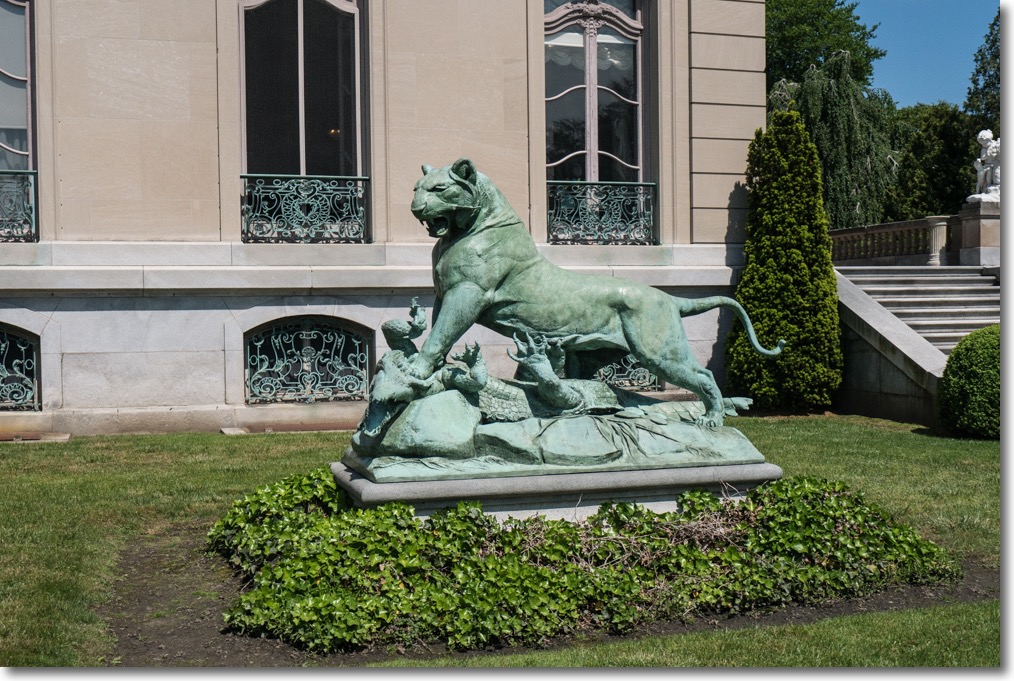
…. while his partner works on a crocodile.
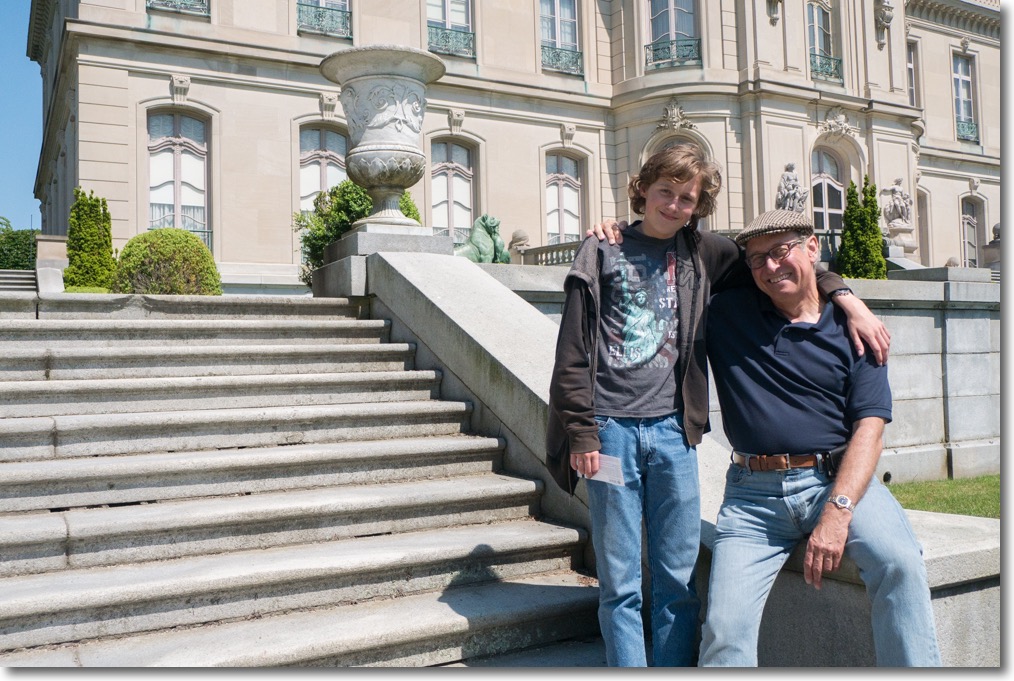
Son and dad on the rear patio. Snap by Santo.
A visit to the mansions of Newport, Rhode Island is recommended. Park in the free main lot at the Breakers and take the free bus to the others, as parking is at a premium in the small, crowded city.